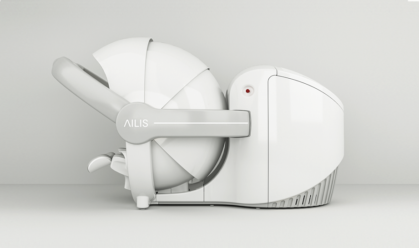Dense breasts and the risk of cancer

Research shows that women with dense breast structures are more likely to develop cancer. Unfortunately, half of all women in the world have such a breast structure.
Women’s breasts are composed of two types of tissues: fibroglandular and fatty. The first type is characterized by high density and complex structure. It is worth to mention that having dense breasts is completely normal and common for almost half of the women in the world. Unfortunately, this condition leads to one of the biggest, nowadays known risks of breast cancer.
Why? Because mammography testing – still the most popular screening test in the world – does not show clear results among women with dense breast structure. In such breasts it is difficult to distinguish between cancerous changes and glands dominating in the tissue as both (cancerous changes and glands) look very similar in a mammographic image. Therefore, some tumors may be hidden or unnoticed. The effectiveness of mammography in such cases falls even to 30%.
Possible risks
Breast density is determined by a radiologist , using a four-stage BI-RADS scale: A – the breasts are almost entirely fat , B – there are scattered areas of fibroglandular density, C – the breasts are heterogeneously dense, D – the breasts are extremely dense
The density is not determined by the cup size or the sensation of the breasts. Over time, it may decrease or change with the age of a woman. In mature women, breasts often become fatter and less flexible.
Having dense breasts does not mean that a cancer will necessarily develop within them. After screening, you should consult your doctor about the general risk of cancer and start monitoring possible threats.
Summary: facts and myths about dense breasts
Dense breasts are heavy
Myth.
The term “density” does not refer to the actual mass of the breast but to its tissue, which contains mammary glands, milk ducts or connective tissue.
Older women have more dense breasts
Myth.
The fact is that women of childbearing age are more likely to have dense breasts, and after the menopause, the mammary glands and ducts simply shrink, leaving more fatty tissue. Some women, however, still have a dense structure as they grow older because of e.g. the hormone therapy they have used to overcome the troublesome symptoms of the menopause.
Density can change over time. Experts emphasize that there are cases where one year a woman has dense breasts, and the next year not anymore.
The heavier the woman’s body weight, the thicker her breasts
Myth.
In fact, it is the opposite. The less weight, the thicker the woman’s breasts become; the more weight a woman puts on, the thicker her breasts become. The same is true for women with naturally large breasts – the bigger the breasts, the more fatty tissue.
Dense breasts increase the risk of cancer
Fact.
Having dense breast tissue increases the risk of cancer. All because of the difficulty of mammography imaging. The glandular structure of the breasts often masks the cancerous changes.
Half the women in the world have dense tissue
Fact.
High breast density is a common phenomenon. About 50% of women in their 40s have dense breasts. This applies more often to women who are both young and slim.
After the diagnosis of dense breasts, further tests will be needed
Fact.
Dense tissue makes it difficult to see the cancer during mammography. With this condition, it is crucial to plan cyclic preventive examinations, bearing in mind that the best way to fight cancer is to detect it early.
Mammography the only screening test of breast cancer
Myth.
Mammography is still the most popular method of breast examination, but it is not fully effective for dense breasts.
The solution is modern technology. AILIS is a diagnostic device based on a unique method of Parametric Dynamic Imaging, which allows for non-invasive and contact-free detection of breast cancer changes and anomalies with the potential to develop into breast cancer.









